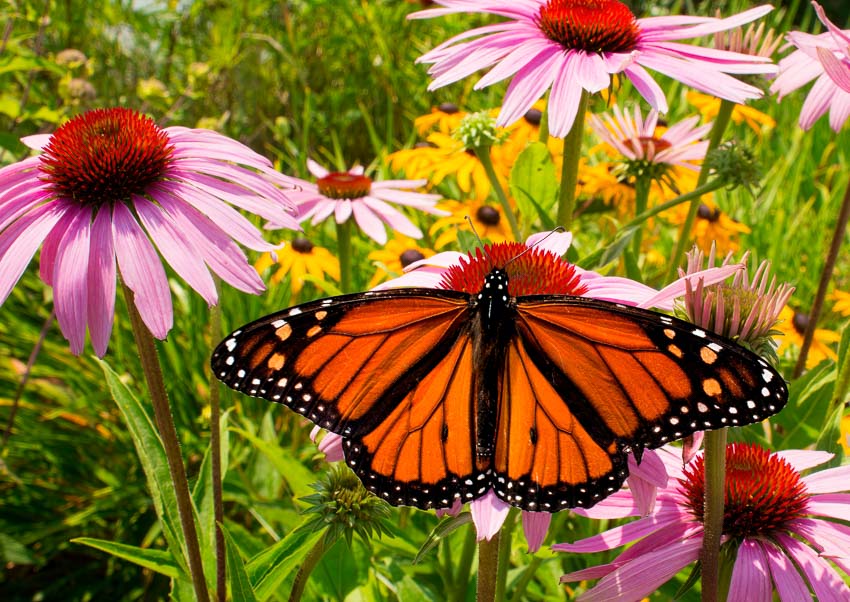If you want to bring color and natural beauty to your yard, attracting butterflies with their favorite plants is a great way to do it. Discover the best plants for attracting butterflies and turn your garden into a diverse haven for these beneficial pollinators.
Benefits of Attracting Butterflies to Your Garden
The butterfly is an iconic symbol of transformation, and they are universally celebrated for their charm and beauty.
Beyond being aesthetically pleasing and culturally significant, butterflies play a significant role in ecosystems. Learn more about how attracting butterflies to your garden can enhance biodiversity and inspire your friends and family.
Enhancing Biodiversity
Butterflies are well-known beneficial pollinators. Without insects and animals pollinating many types of plants, many species, including humans, would suffer.
All gardens are an excellent way to promote biodiversity. When you plant flora that supports butterflies, you’re making your yard an ecosystem. In turn, this will support a wider range of species.
Aesthetic Delight
Who doesn’t love to watch butterflies dancing on the wind, flitting from flower to flower?
The aesthetic appeal of butterflies makes many gardeners and yard enthusiasts backyard lepidopterists (someone who studies butterflies). The beauty of butterflies provides hours of delight for people of all ages, and their transformation into winged creatures is amazing to contemplate.
Educational Opportunities
The easy grace of the butterfly doesn’t tell the whole story about their journey from the lowly caterpillar to flighted beauty. The true story of transformation, resilience, and strength behind the flutter of their wings is a metaphor for educational lessons.
When you plant a butterfly garden in your backyard, people of all ages will become entranced by their magnificence and want to know more. That spark of interest is where learning is born.
Inspiring Nature Exploration
Once a person’s curiosity is piqued, it’s hard to quench the thirst for more knowledge, especially when it comes to the greatest teacher of all, which is Mother Nature.
Exploring nature in your backyard will be fun for people of all ages, and you can even invite classrooms from the schools and churches in your area to visit your butterfly garden.
Let OPE Reviews help you understand the difference between annuals and perennials.
List of Best Plants for Attracting Butterflies
What are the best plants for attracting butterflies? These are the top five guaranteed to bring these gentle creatures into your yard.
Milkweed (Asclepias)
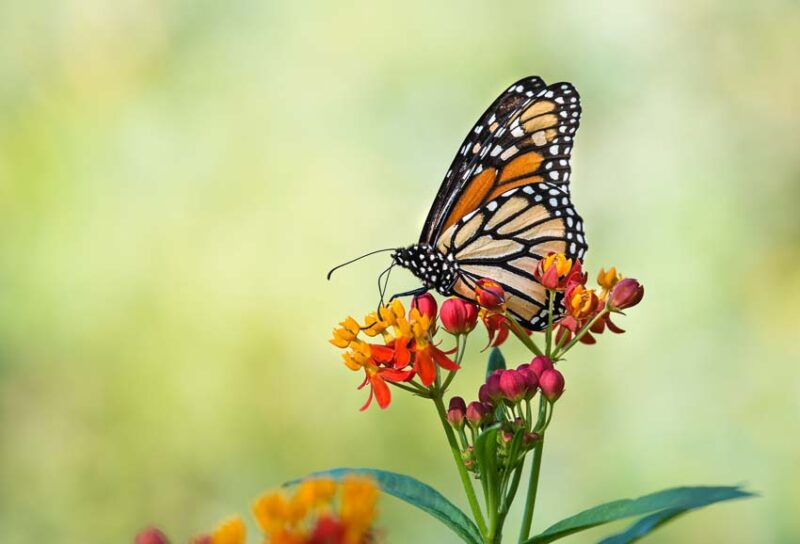
There are over 200 milkweed species, and about a dozen are native to North America. Common milkweed is also known as butterfly, silk, and silky swallow-wort.
Perennial, 2 to 4 feet tall, various colors of flowers
Essential for Monarch Butterflies
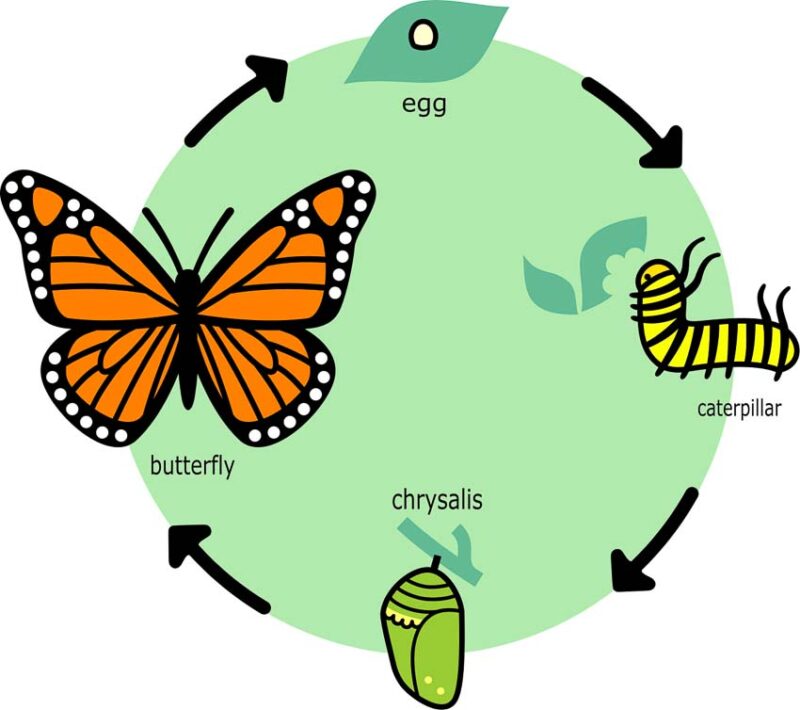
You need to grow milkweed to attract monarch butterflies, which are an endangered species. In the larval stage, monarchs feed solely on milkweed, and without it, they wouldn’t be able to survive.
Monarch butterflies lay their eggs in March to April on milkweed plants, and about four days later, the caterpillars start to eat the milkweed. Within 25 days, monarch adults emerge and repeat the cycle every month until August.
Varieties and Growth Conditions
Milkweed is another plant that will attract butterflies. It’s a hardy perennial that grows in USDA Hardiness Zones 4 to 9. Plant common milkweed from seeds or transplants in full sun. They are large plants, so give them plenty of space.
In many areas, planting the tropical variety of milkweed is illegal because it confuses monarchs’ migration patterns and produces a parasitic spore that is harmful to them.
Purple Coneflower (Echinacea)
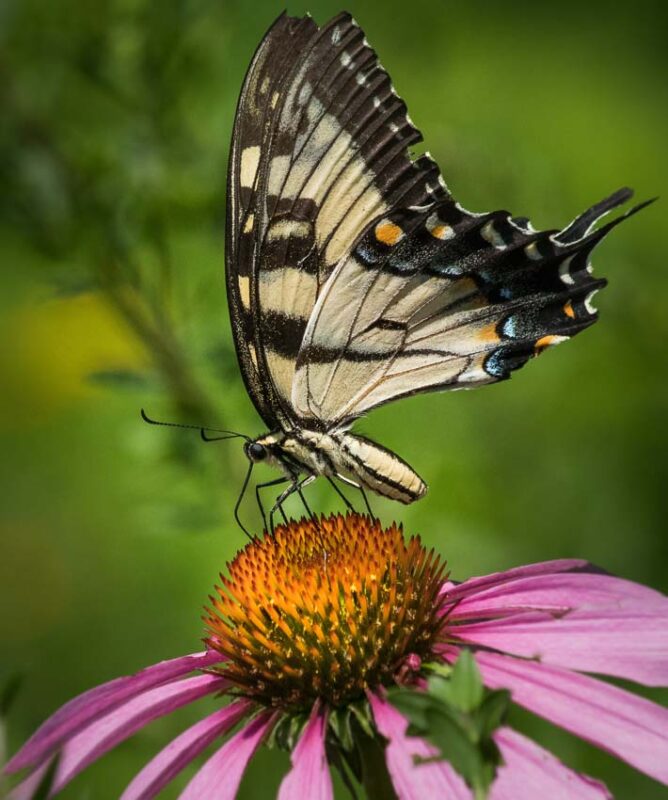
Purple coneflower, also commonly known by its botanical name Echinacea, is easy to grow. It’s a striking plant in any perennial flower bed or wildflower meadow, making it a favorite among many gardeners.
Perennial, 1 to 5 feet tall, commonly has purple flowers
Nectar-Rich Blooms
Some of the butterflies commonly attracted to Echinacea include monarchs, swallowtails, and silver-spotted skippers.
The deep roots of purple coneflower make it an ideal plant for naturalizing in rain gardens and drought-resistant gardens. It has nectar-rich blooms that attract a variety of birds and bees. In the fall, the seed heads will attract many species of birds, especially finches.
Long-Lasting Flowering Season
Echinacea blooms profusely from June to September, providing nectar to many species of butterflies and other beneficial pollinators. The standard variety of Echinacea has reddish-purple flowers with a cone-shaped center, and there are also pink and white cultivars of this robust flower.
Black-Eyed Susan (Rudbeckia)
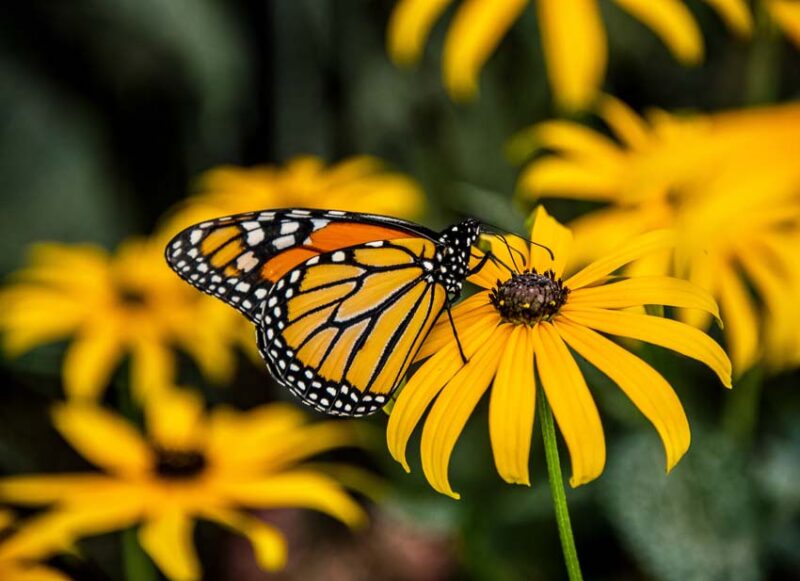
Native to North America, Black-eyed Susans were one of the first plants to become domesticated in landscapes across the United States.
Perennial, 4 to 6 feet tall, yellow flowers with a black center
Bright Yellow Blooms
The bright yellow blooms of the Black-eyed Susan are a striking companion for Echinacea. Since they grow to similar heights and prefer similar growing conditions, people often plant them together.
This flower is among many butterflies’ favorite sources of nectar. This includes monarchs, bees, and other insects. Like purple coneflowers, they bloom all summer. In addition to attracting butterflies, Black-eyed Susans also make an excellent choice for cut flower gardens.
Drought-Tolerant Options
Many people are turning to drought-resistant plants to save money in areas with water shortages. Black-eyed Susans are an excellent choice because they require little maintenance once established, and you can grow them quite successfully in containers, flower beds, and wildflower meadows.
Lantana
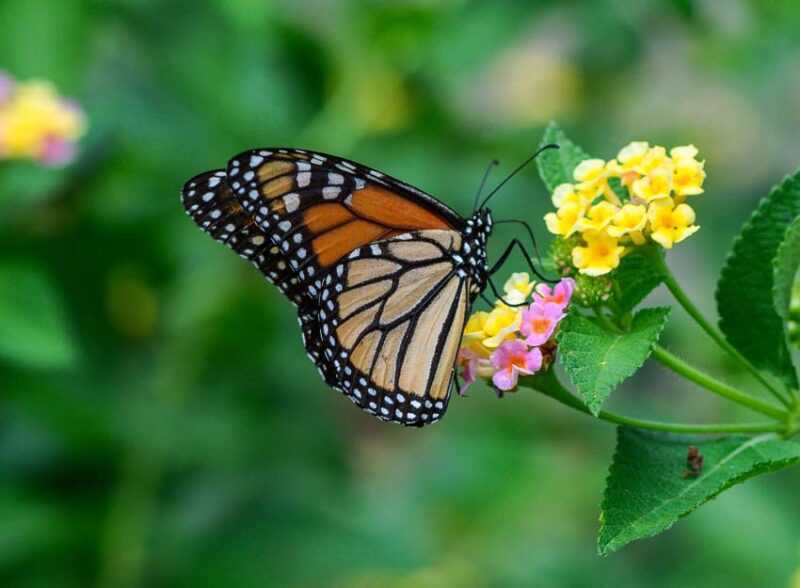
The clusters of nectar-filled blossoms make lantana one of the best butterfly-attracting plants. Technically a perennial, people often grow it annually because it is only hardy in Zones 9 to 11.
Perennial, 2 to 5 feet tall, clusters of multicolored flowers
Multicolored Clusters
Choose a sunny spot for lantana, and they will reward you with profuse clusters of multicolored blossoms nonstop all season long. You can grow them annually in northern climates, but in southern regions, it is an evergreen shrub.
Lantana attracts a diverse mix of butterflies, including monarchs, swallowtails, red admirals, cabbage white, and skippers.
Heat-Tolerant and Low-Maintenance
Lantana prefers well-drained soil, and it’s often cultivated not just for its showy flowers but also because it is heat-tolerant and easy to care for. Zinnias are an excellent companion plant for lantana, and these two plants are often grown together with sunflowers for a striking display of flowers in late summer.
Butterfly Bush (Buddleia)
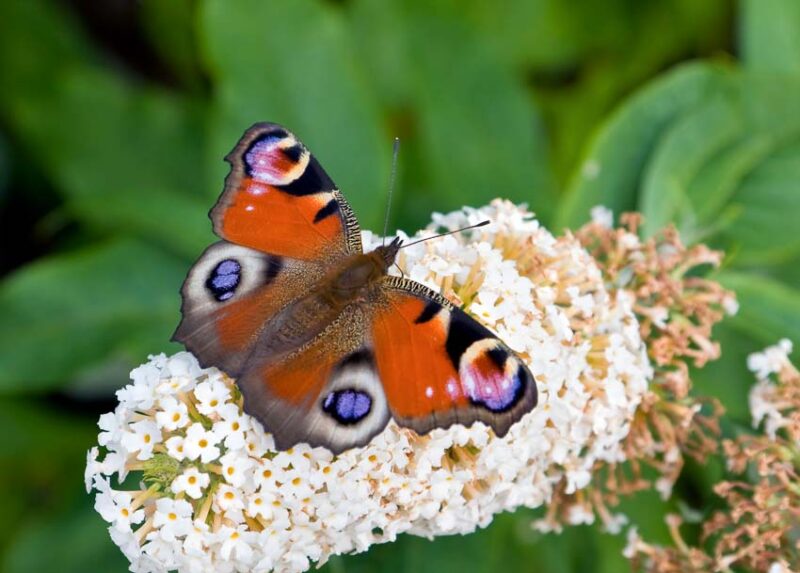
A butterfly garden is only complete with Buddleia, or butterfly bush because it is irresistible to them.
Perennial shrub, 4 to 12 feet, multiple flower colors
Irresistible to Butterflies
The butterfly bush is a tall shrub, often planted with other flowers that attract butterflies. It grows quickly and has long spikes of flowers that bloom from mid-summer to early fall.
The most common color of butterfly bush is purple, but they are also available in pink, violet, and white flowered varieties.
Pruning and Maintenance Tips
Native to China, butterfly bush can be invasive. They don’t require a lot of pruning to thrive, but since they only bloom on new growth, you often need to trim them heavily in the spring.
Also known as summer lilacs, butterfly bushes are easy to grow if you provide them with full sun and moist, well-drained soil.
With all this talk about attracting insects, let’s not forget to come back and explore keeping insects away. Check out our guides to preventing Japanese beetles and plants that repel mosquitoes!
Creating a Butterfly-Friendly Environment
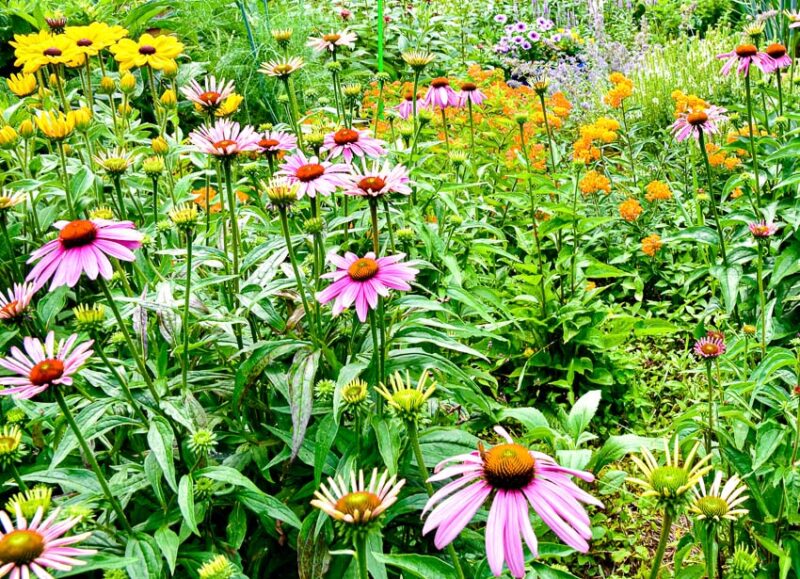
Adding flora to your landscape is a great start to creating a butterfly-friendly landscape. But what else can you do to attract butterflies to your yard? Learn more about how to create the best butterfly habitat in your backyard.
Plant Diversity and Placement
Insects of all kinds play key roles in biodiversity and are key indicators of the health of an ecosystem. Globally, insect populations are dwindling, and many of the 180,000 species in the order Lepidoptera, including butterflies and moths, are threatened and endangered.
The best location for your butterfly garden is a sunny, sheltered spot in your yard. Butterflies are cold-blooded insects that require ample sunlight, as do most of the nectar plants they are attracted to.
Your butterfly haven should receive at least 6 to 8 hours of sun daily. A windbreak of dense conifers like juniper, arborvitae, or cypress is ideal when creating a butterfly sanctuary because butterflies prefer scrub forests in their natural habitats.
Planting a wildflower meadow is an excellent way to attract butterflies and other beneficial pollinators. Farmers in some areas are planting strips of wildflowers in their crops to attract pollinators, which increases pollination and production.
Providing Host Plants
Lepidopterans require two different types of plants. They need nectar plants to feed on in the adult stage, but they also require host plants, like milkweed, for their larval stage. Host plants also provide a structure for butterflies to pupate.
Larval Host Plants for Butterflies
Common milkweed, the only host plant for monarchs, provides flowers rich in nectar, but it’s also an important plant for the caterpillars to eat.
Here are some other host plants that you can add to your butterfly garden to attract more species of butterflies:
- Chokecherry–attracts swallowtails
- Dill–attracts black swallowtails and anise swallowtails
- Hollyhock–attracts painted ladies
- Oak–attracts Horace’s dusky wing and banded hairstreak
- Passionflower–attracts fritillary butterflies
- Snapdragon–attracts common buckeye caterpillars
- Violets–attract fritillary butterflies
- Willow–attracts viceroys, western tiger swallowtail, and mourning cloak
Nectar Plants for Butterflies
Nectar-rich plants for butterflies are delightful to grow for fragrance and beauty. Here is a list of flowers to plant to attract butterflies:
- Zinnias
- Verbenas
- Asters
- Lavender
- Bee balms
- Goldenrod
- Phlox
- Stonecrop
- Sunflowers
Providing a Source of Water
Installing a backyard pond is another way to attract beneficial pollinators, and while butterflies don’t need a lot of water, they do need access to some. You can use a pond, misters, or a water fountain to supply water to butterflies.
Butterfly Shelters
Butterflies need shelter from wind and rain, but it doesn’t take much. Planting a windbreak hedge will give them a place to shelter from inclement weather, but in the meantime, you should add butterfly houses to your garden, especially in open areas.
A butterfly box provides a place to escape predators and roost at night when they are vulnerable. Simple DIY butterfly boxes can be built for less than $20, attached to a pole, and placed in your butterfly garden.
Avoiding Pesticides and Chemicals
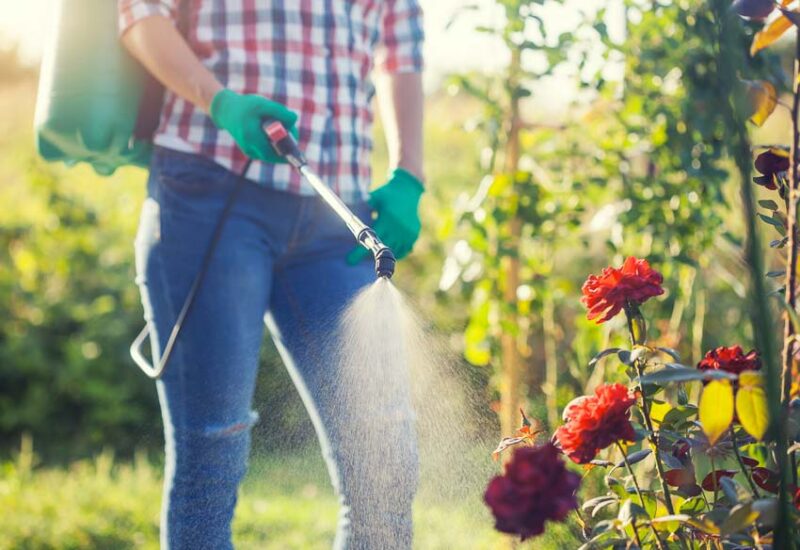
It’s important to avoid using pesticides and chemicals if you are attracting butterflies. Pesticides, even organic ones, do not discriminate between “bad” and “good” bugs, and they are one of the main contributors to the decline of insect populations.
Safe and effective methods exist for preventing insect pests in your outdoor space. Try using methods like companion planting and repellant plants to get rid of insects in your yard.
FAQ: Common Questions About Best Plants for Attracting Butterflies
1. Do I need a large garden to attract butterflies?
You can attract butterflies with any size of the garden. Plant a few nectar-rich plants like Black-eyed Susans, and add a couple of larval host plants in the corner of your small garden. Then get ready to enjoy the company of butterflies.
2. Can I attract butterflies to a container garden?
Even a garden as small as a container garden on a balcony will attract butterflies. Adult butterflies are looking for host plants to lay their eggs and nectar plants to feed on. It’s possible to provide both of these in containers.
3. What if I have deer in my area? Will butterfly plants attract them?
Deer will eat many different types of plants, but they don’t like everything. One of the best plants to grow is the butterfly bush, which will attract butterflies but is resistant to deer. They will also stay away from purple coneflowers and black-eyed Susans.
4. How long does it take for butterflies to find my garden?
Butterflies are attracted to plants by their smell and color, and they can find your plants from far away. How long it takes to attract a lot of butterflies depends on factors like how far away you are from other butterfly habitats.
5. Can I attract specific butterfly species with certain plants?
You can grow a butterfly garden to attract certain species of butterflies. It’s important to plant both larval host plants and nectar plants that are preferred by the species you are trying to attract to your garden.

